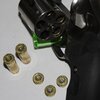Hey guys...
I found a few LC 5.56 cases that were suspect and used the paper clip to determine if there was case head separation and I could definitely feel the divot. Well the cat seems to enjoy the paper clips or they are so small I lose them, so I picked these up. I can feel the divot in the same brass but not as bad as the paperclip. I am using the straighter of the picks. Any issue using these instead of a paper clip? I have a lot of range brass to go through the next few weeks and want to make sure I'm doing it correctly.
Well let me edit this seeing how what I typed didn't go through. With the pick I can feel some sort of grit in the case that almost feels like rust. The paper clip only feels the divot. Any idea what the crust is?
https://www.harborfreight.com/6-piece-pick-set-93514.html
I found a few LC 5.56 cases that were suspect and used the paper clip to determine if there was case head separation and I could definitely feel the divot. Well the cat seems to enjoy the paper clips or they are so small I lose them, so I picked these up. I can feel the divot in the same brass but not as bad as the paperclip. I am using the straighter of the picks. Any issue using these instead of a paper clip? I have a lot of range brass to go through the next few weeks and want to make sure I'm doing it correctly.
Well let me edit this seeing how what I typed didn't go through. With the pick I can feel some sort of grit in the case that almost feels like rust. The paper clip only feels the divot. Any idea what the crust is?
https://www.harborfreight.com/6-piece-pick-set-93514.html
Last edited:







